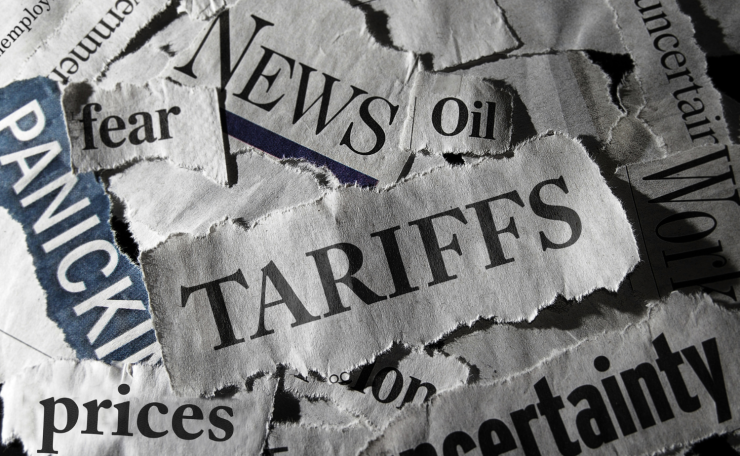August 1 approaches, and the global business community finds itself at a crossroads that could fundamentally reshape international trade relationships for years to come. President Donald Trump’s ultimatum for dozens of countries to negotiate trade agreements or face steep tariff increases has created an atmosphere of unprecedented uncertainty, with implications extending far beyond diplomatic circles into corporate boardrooms and small business operations across America.
The deadline marks the culmination of Trump’s aggressive “reciprocal tariff” approach, which began with sweeping duties imposed in April before being delayed to allow for negotiations. Unlike previous trade disputes that targeted specific sectors or products, this comprehensive approach threatens to impose tariffs as high as 50% on major trading partners, including the European Union, Canada, and Japan, unless satisfactory trade agreements are reached.
The Stakes for American Business
The approaching deadline has exposed a stark divide between large corporations and small businesses in their ability to navigate trade policy turbulence. While multinational companies like General Motors and Apple can deploy teams of lobbyists to influence policy outcomes in Washington, smaller enterprises find themselves largely powerless against forces that could determine their survival.
Sarah Wells, founder of Sarah Wells Bags, exemplifies the predicament facing many small business owners. After moving production from China to Cambodia to avoid initial tariffs, she now faces the prospect of paying a 36% duty on Cambodian imports higher than the rates that originally drove her away from Chinese suppliers. “I’ve tried to manufacture in the United States, but I can’t,” Wells explained, highlighting the limited options available to small manufacturers caught in the crossfire of trade policy.
The Commerce Department reports that 97% of US businesses that import products are small enterprises, yet these companies lack the resources to adapt quickly to shifting trade conditions. KPMG’s recent survey revealed that business leaders are pausing investment for up to a year amid tariff uncertainty, suggesting the policy’s economic impact extends beyond immediate cost increases.
Negotiation Outcomes and Market Reactions
Despite months of diplomatic engagement, the Trump administration has secured trade frameworks with only eight countries out of more than 200 potential targets. The European Union, America’s largest trading partner, agreed to a 15% baseline tariff rate half the originally threatened 30% while South Korea negotiated similar terms alongside a commitment to invest $350 billion in American biotechnology, semiconductors, and shipbuilding.
However, significant trading partners remain without agreements. Canada faces a 35% tariff on various goods, while Australia and India have yet to reach deals. Trump announced that India would face a 25% tariff plus additional penalties for purchasing military equipment and energy from Russia, demonstrating how trade policy has become intertwined with broader geopolitical considerations.
Financial markets have shown surprising resilience to the approaching deadline. Goldman Sachs now expects a one-time price increase rather than sustained inflation, while analysts suggest that investor calm could actually embolden the White House to follow through on its threats. This market confidence may reflect a belief that negotiations will continue beyond August 1, even if new tariff rates take effect.
Supply Chain Disruption and Corporate Responses
The tariff uncertainty has forced companies to reconsider fundamental aspects of their operations. The American Chamber of Commerce in Mexico, which serves 1,500 US-based companies including major brands like Coca-Cola, faces the prospect of 30% tariffs on Mexican imports despite the existing United States-Mexico-Canada Agreement framework.
Commerce Secretary Howard Lutnick’s assertion that “August 1 is a hard deadline” has provided little comfort to businesses seeking clarity. While he acknowledged that countries could continue negotiations after the deadline, the immediate imposition of higher tariffs would create significant operational challenges for companies already operating on thin margins.
The automotive sector faces particular scrutiny, with Japanese companies Toyota, Nissan, and Honda experiencing stock declines following investor assessment of potential impact from 25% tariffs on goods from Japan and South Korea. These companies have invested billions in American manufacturing facilities, creating a complex web of interdependencies that tariffs could disrupt.
Economic Implications and Long-Term Outlook
August 1 will serve as more than a trade policy milestone; it will test whether Trump’s confrontational negotiation style can achieve sustainable economic outcomes. The Tax Foundation estimates that current tariffs already amount to an average tax increase of nearly $1,300 per US household in 2025, raising questions about the policy’s ultimate cost-effectiveness.
Treasury Secretary Scott Bessent has suggested flexibility in implementation, noting that tariffs could remain in place “anywhere from a few days to a few weeks” during good faith negotiations. His approach acknowledges the complexity of modern trade relationships while maintaining pressure for favorable agreements.
Businesses across America now brace for potential disruption, with the August 1 deadline likely serving as a defining moment in Trump’s broader economic approach. Whether this method ultimately strengthens American trade positions or creates lasting economic friction remains to be seen, but the immediate impact on business confidence and operational planning is already evident across industries and company sizes.
The coming days will reveal whether diplomatic solutions can emerge from this high-stakes gambit, or if American businesses must adapt to a fundamentally altered global trade environment shaped by unprecedented tariff barriers.



